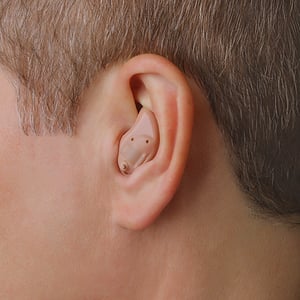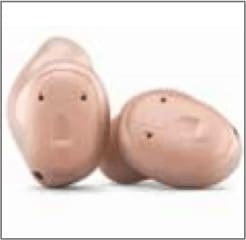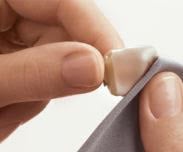Time to read: 3 minutes
 Your audiologist has a number of different options to help you maximise your best possible hearing.
Your audiologist has a number of different options to help you maximise your best possible hearing.
This is because different models of hearing aids better suit some hearing loss profiles than others.
If you have complex hearing loss or fall into the severe or profound range, your clinician may talk to you about hearing aids with earmolds.
An earmold is plastic especially shaped to your ear canal to deliver better sound. This is very helpful for clients who have hearing loss across all frequencies, and particularly for those with low frequency loss.
An earmold can come in one of three sizes - depending on your ears:
- Canal size (small)
- Half-shell size (medium) or
- Full-shell size (large).
 The kind of earmold you wear also depends on your personal preference, the shape and texture of your ear, and your specific hearing aid.
The kind of earmold you wear also depends on your personal preference, the shape and texture of your ear, and your specific hearing aid.
Once you have had your hearing assessment with your clinician ,who will have discussed why hearing aids with molds is a good choice for you, they will use a plasticine-style putty to take an impression of your ear canal.
The process of injecting the putty is completely painless, but it can feel very strange going in. Some people tell us that their ears feel blocked, others say that the putty feels cold.
After the putty has set, the impression is then sent to the manufacturer to be created just for you.
Another advantage of snugly fitting molds is reducing feedback - that is amplified sound leaking from the ear canals and being picked up by the hearing aid microphone and being rebroadcast.
Most people report great results with hearing aids with molds but they do take a little while to get used to - especially if you are new to wearing hearing aids.
 But here are some of the most common problems we hear:
But here are some of the most common problems we hear:
- Muffled sound. If your voice sounds muffled, your earmold might need to be modified or the electronics need to be serviced.
- The sound is too loud. If this is the case, the earmold may need a larger vent.
- Feedback. This means your earmold is not seating properly. Your clinician can add a special retention lock to keep the aid firmly in place.
Care and cleaning of earmolds
Wipe clean each night before you go to bed - it’s as simple as that. We have some great articles and links to videos on how to clean hearing aids:
|
How to Clean Your Hearing Aids: Receiver-In-Canal |
https://blog.valuehearing.com.au/news/how-to-clean-your-hearing-aids-receiver-in-canal |
|
How to clean your hearing aids - custom hearing aids |
https://blog.valuehearing.com.au/news/how-to-clean-your-hearing-aids-custom-hearing-aids |
|
How To Clean Your Hearing Aids |
But if you have any difficulties or discomfort, do contact your clinician.
Did you know?
Custom earmolds are used by people without hearing loss. People who work regularly in loud or hostile environments including musicians, swimmers and race car drivers wear custom earmolds to protect their hearing.